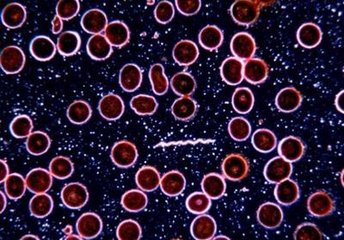Lyme disease is a natural epidemic disease caused by Borrelia burgdorferi, also known as Lyme borreliosis. The main clinical manifestations are multiple systems and multiple organ damages such as skin, heart, nerves and joints. The disease is a global disease and has a long history. In 1900, there were records of erythema chronicum migrans (ECM) in the European dermatological literature. Cases of ECM in Connecticut began in 1905. In 1975, another epidemic of teenage rheumatoid arthritis was diagnosed in the Lyme town of the state, known as "Lyme arthritis." In 1978, the disease was proved to be a multi-system infectious disease transmitted by a hard bite. It was called Lyme disease.
In 1982, the spirochete was isolated from the cockroach. In 1984, this pathogen was confirmed to belong to the genus Borrelia, also known as Borrelia. Due to its wide distribution, rapid spread, and high morbidity rate, Steere has systematically paid attention to it since 1975. Steere has attracted the attention of scholars from all over the world. He has done a lot of research work and accumulated a wealth of data.
Lyme Disease Pathogenesis
Borrelia burgdorferi mainly exists in the midgut diverticulum of the pupa. When the fleas bite, it can pass from the spirochete contained in the parotid gland or midgut through the reflux to the suction chamber, and then invade the microvasculature of the human skin, and the blood flows to the whole body. Organ organization. However, the bacteremia caused by the pathogen is shorter and the amount of spirochetes in the blood is not much, but it can cause damage to so many organs and systems. Its pathogenic mechanism may be the result of multiple factors.
In 1998, it was found that the spirochetes have two kinds of adhesions, namely DbpA (decorin binding protein A) and DbpB, which bind the spirochetes to the collagen-associated extracellular matrix proteoglycans of skin and other organ tissue cells through an adhesin. Causes the cells to develop lesions. The cell wall of B. burgdorferi contains lipopolysaccharide (LPS) components, which have endotoxin-like biological activity; and its outer membrane surface proteins Osp A, Osp B, and Osp C have important virulence and invasiveness. The spirochetes can also induce host cells to release cytokines that can increase the inflammation of the diseased tissue.
About a few days after the spiral body enters the skin, it causes primary damage to the primary skin of the first stage. There are plasma cells and lymphocyte infiltration around the superficial and deep blood vessels of the damaged skin, manifested as chronic migrant erythema (ECM), spirochetes The LPS component causes systemic symptoms and hepatosplenomegaly. Epithelial thickening, mild keratinization with mononuclear cell infiltration, edema of the epidermis, and no purulent and granulomatous reactions were observed on ECM tissue sections. When the spirochete infects all tissues and organs through the blood circulation, it enters the second stage (spreading lesion stage), mainly in the central nervous system (especially the brain) and the damage of the heart.
There are mononuclear cell infiltration around the cerebral cortex and cranial nerves, especially the facial nerve, oculomotor nerve, and the aorta, and heart tissue. If the disease lasts for more than several months, it will enter the third phase (lasting infection period), with joints, skin lesions, and late nerve damages as the main factors. Visible joints show hyperplastic inflammatory synovitis with vascular hyperplasia, synovial villi hypertrophy, fibrin deposition, and mononuclear cell infiltration. Bone and cartilage also have different degrees of erosive destruction. The skin is atrophic, discolored or collagen fibers are thickened and densely packed, resembling scleroderma lesions and atrophic limb dermatitis. The nervous system is mainly composed of progressive encephalomyelitis and axonal demyelinating disease, with lymphocytic infiltration around blood vessels, thickening of blood vessel walls, and hyperplasia of collagen fibers.
Lyme Disease Complication
1. When the nervous system is damaged, it can be complicated by cerebrospinal meningitis, encephalitis, cranial neuritis, movement and sensory neuritis, and chorea, cerebellar ataxia, and myelitis.
2. When the heart is extensively involved, acute myocardial pericarditis can occur.
3. The joints sometimes damage the cartilage and bone and can cripple the joints. When large joints are involved, there are vasospasm formation and bone and cartilage erosion.
4. Obliterative arteritis can also be seen, rare chronic neuropathy in the late stage as well as transverse myelitis, diffuse sensory axonneuropathy, and demyelinating myelin sheaths. In some patients, iritis can occur, and even total ophthalmia leads to vision loss.





 Price is 8-20% Lower Than Other
Price is 8-20% Lower Than Other






